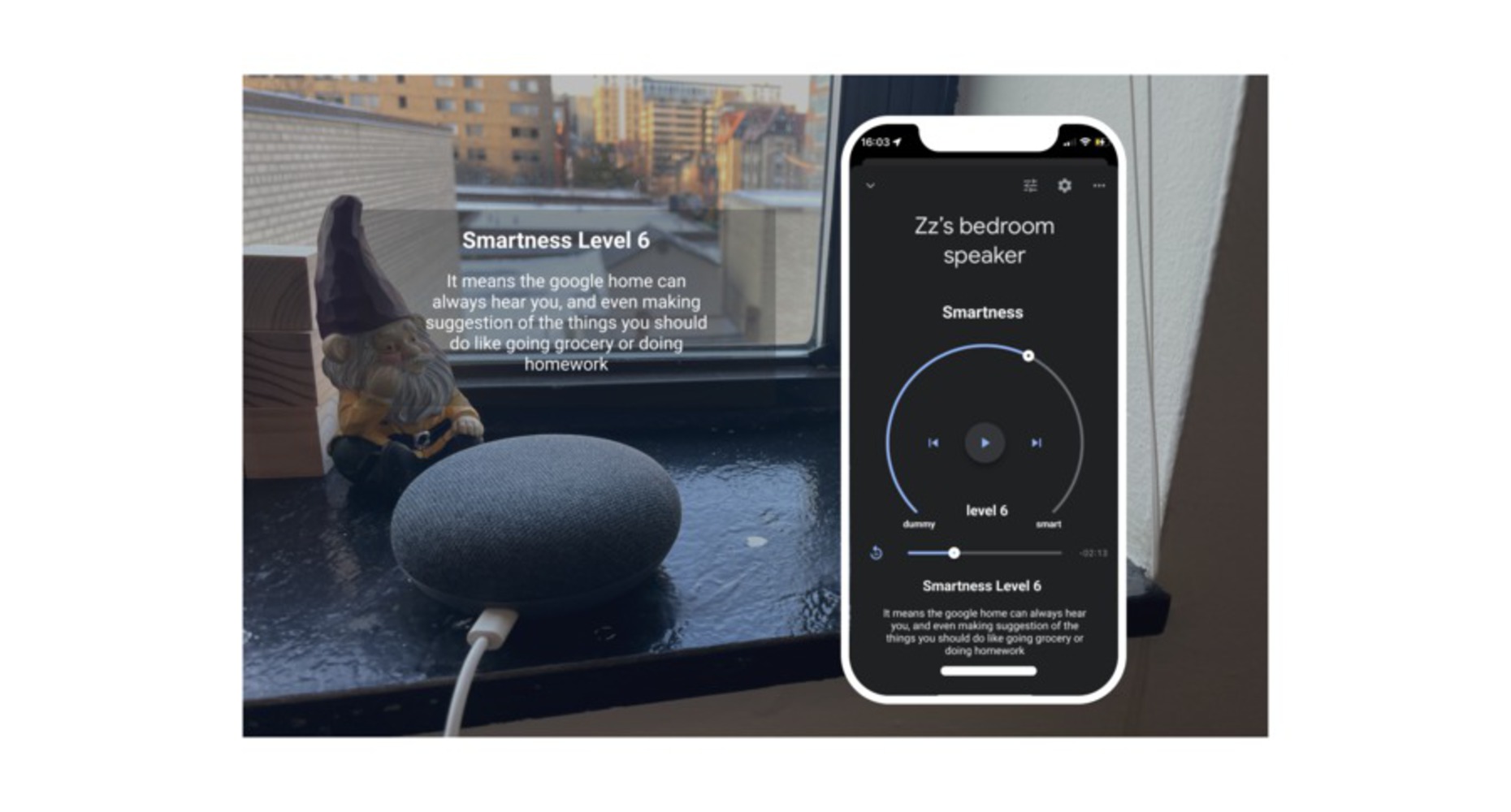Process
I looked at some articles about speculative design and how we can design products to negate the current circumstances and find alternatives, like the Speculative Everything by Anthony Dunne and Fiona Raby, James Pierce's undesigning technologies[1], Audrey's work revisiting agency issues in home[2], which makes me think how I can design things to help surface these problems and visit those alternatives. I also find the levels of Autonomous Vehicles [3] a strong evidence that we should retrive those power of control back, just like how we control the level of smartness with autonomous vehicles.
I took the video of my own google home and made the video and mock-up UI based on google home app. Instead of having virtual interfaces, I would turn it into physical knobs like the control knob to replace the on/off button. My research explores the retrival of agency and privacy of those smart products we own, how we should design those smart products and leave the users more freedom and control. Due to the short amount of time, I chose designing UI instead of doing a 3D prototype. The latter with physical control would be more ideal.
References
1. James Pierce. 2012. Undesigning technology: considering the negation of design by design. In Proceedings of the SIGCHI Conference on Human Factors in Computing Systems (CHI '12). Association for Computing Machinery, New York, NY, USA, 957–966. DOI:https://doi.org/10.1145/2207676.2208540
2. Audrey Desjardins, Jeremy E. Viny, Cayla Key, and Nouela Johnston. 2019. Alternative Avenues for IoT: Designing with Non-Stereotypical Homes. Proceedings of the 2019 CHI Conference on Human Factors in Computing Systems. Association for Computing Machinery, New York, NY, USA, Paper 351, 1–13. DOI:https://doi.org/10.1145/3290605.3300581
3. The 6 Levels of Vehicle Autonomy Explained https://www.synopsys.com/automotive/autonomous-driving-levels.html

